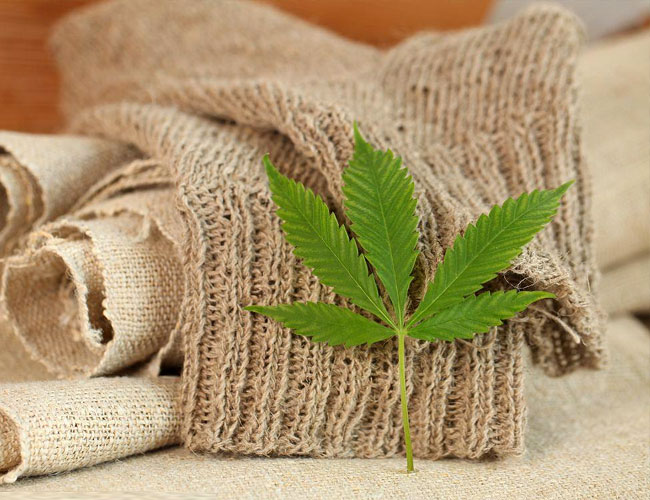
Hemp fabric is a textile material made from the fibers of the hemp plant (Cannabis sativa) that can be used to make a variety of products including clothing, cords, and bags, and is one of the oldest cultivated crops used in textile production, with its use dating back to ancient civilizations.
For thousands of years, hemp has been thought of as a textile fiber with superb tensile strength and durability.
The cannabis plant is also known as hemp, and the fabric made from its fibers is commonly referred to as hemp fabric. Hemp fabric is breathable, durable, and soft, making it suitable for clothing, footwear, and other textile products.
Hemp fabric production is also environmentally friendly, as the cannabis plant grows quickly and requires less water and fertilizer than many other crops. Additionally, hemp fabric can be recycled and reused, further reducing waste and environmental impact.
Hemp fabric can be produced from cannabis sativa fibers grown and processed in various countries around the world. The cultivation and processing of hemp fibers is legal in many countries, including Canada, the United States, the United Kingdom, China, India, and more. Hemp fibers are often extracted from the cannabis plant using a variety of chemical and mechanical processing methods, and then spun into yarn or thread that can be woven or knitted into fabric. The production of hemp fabric is environmentally friendly and sustainable, as the plants used are fast-growing and require relatively low inputs of water, fertilizer, and land.
Canada is one of the largest growers and processors of hemp fibers, with over 100,000 acres devoted to hemp cultivation in 2018. Other countries with a significant hemp fiber production include China, Hungary, France, and more. Hemp fibers can also be imported into other countries for processing into fabric or other products.
Ancient Origins: Hemp, derived from the Cannabis sativa plant, is believed to have been one of the first plants cultivated for textile purposes. Archaeological evidence suggests that hemp was used for fabric in ancient China as far back as 8,000 BCE. Chinese civilization, in particular, is credited with the early development and refinement of hemp textile production techniques.
Spread to Europe: Hemp cultivation and the use of hemp fabric spread to Europe, where it became a staple crop for textiles. By the Middle Ages, hemp was widely cultivated in European countries, and it was used to make clothing, sails, and ropes for ships.
Colonial America: Hemp played a significant role in the early history of the United States. European settlers brought hemp seeds to America, and it quickly became a valuable crop for making a variety of goods, including clothing, paper, and cordage. In fact, the Declaration of Independence was reportedly drafted on hemp paper.
19th Century: Hemp remained an essential crop for textile production throughout the 19th century. However, with the development of the cotton gin and the increased availability of cotton, hemp faced competition, and its popularity declined in the textile industry.
20th Century: Hemp faced further challenges in the 20th century due to legal restrictions in many countries, primarily driven by concerns about its close relationship to marijuana, another variety of the Cannabis sativa plant. These restrictions made it difficult for hemp to compete with other textiles, and its cultivation waned in many parts of the world.
Recent Resurgence: In recent decades, there has been a renewed interest in hemp, driven by environmental concerns and the search for sustainable and eco-friendly textiles. As laws and regulations regarding hemp cultivation have evolved in various countries, hemp fabric has made a comeback in the fashion and textile industries.
More detailed history from the Hemp of Wikipedia.
Many people wonder Where Does Hemp Fabric Come From? Next, G&F tells you about the involves several steps of making hemp fabric, from harvesting the hemp plant to processing its fibers into usable textiles. Here's an overview of the process:
- Hemp is grown as a crop, typically in fields with well-drained soil.
- The hemp plants are cultivated and allowed to grow until they reach maturity, which can take several months.
- Hemp is harvested when the plants are at the right stage of growth, usually before they begin to flower. Harvesting can be done by cutting the stalks close to the base of the plant.
- After harvest, the hemp stalks need to undergo a process called retting. Retting is a natural decomposition process that breaks down the outer plant tissues, leaving the long, strong fibers intact.
- There are two primary methods of retting: dew retting and water retting. Dew retting involves leaving the stalks in the field to be exposed to dew, rain, and microbes. Water retting is a faster process that involves submerging the stalks in water.
- Once the retting process is complete, the hemp stalks are dried and then mechanically beaten to separate the outer bark from the inner fibers. This process is called breaking.
- After breaking, the remaining fiber bundles, known as "straw," are further cleaned and refined through a process called scutching. Scutching involves scraping away any remaining woody material and impurities from the fibers.
- After scutching, the fibers are hackled or combed to remove any remaining impurities, align the fibers, and create long, parallel strands of fiber.
- This process results in long, smooth hemp fibers ready for spinning into yarn.
- The cleaned and combed hemp fibers are spun into yarn using traditional spinning techniques or modern machinery.
- The spun hemp yarn can vary in thickness and can be used for various textile applications.
- Hemp yarn can be woven on looms or knitted to create different types of fabric structures.
- The choice of weaving or knitting method and the specific pattern used will determine the characteristics of the final fabric.
- After weaving or knitting, the hemp fabric may undergo finishing processes to improve its texture, appearance, and properties. This can include processes like bleaching, dyeing, and softening.
- The finished hemp fabric is inspected for quality, and any defects are addressed.
- The final hemp fabric is ready to be distributed to manufacturers who will use it to create various products, such as clothing, bags, home textiles, and more.
It's important to note that the specific methods and technologies used in hemp fabric production can vary depending on factors like location, equipment, and desired fabric characteristics. Hemp fabric production is often chosen for its eco-friendliness and sustainability, as hemp requires fewer pesticides, herbicides, and water compared to some other crops used in textile production.
Hemp fabric possesses several unique properties that make it a desirable choice for various textile applications. Here are some key properties of hemp fabric:
1. Durable: Hemp fabric is known for its exceptional durability and strength. It is one of the strongest natural fibers available, making it resistant to wear and tear. Over time and with proper care, hemp fabric can become even softer without losing its strength.
2. Breathable: Hemp fabric is highly breathable, allowing air to pass through easily. This property makes it a comfortable choice for clothing, especially in hot and humid conditions, as it helps keep the wearer cool and dry.
3. Moisture Absorbent: Hemp fibers can absorb moisture quickly and release it just as fast, which makes hemp fabric suitable for activewear, undergarments, and towels. It helps wick moisture away from the skin, contributing to comfort during physical activities.
4. Antimicrobial: Hemp fibers have natural antimicrobial properties, which means they can inhibit the growth of bacteria and fungi. This property can help reduce odors and keep clothing fresher for longer.
5. UV Resistant: Hemp fabric provides some level of UV (ultraviolet) resistance, helping to protect the wearer from harmful sun rays. However, the degree of UV protection can vary depending on the weave and thickness of the fabric.
6. Thermoregulatory: Hemp fabric has the ability to adapt to the surrounding temperature, helping to keep the wearer warm in cooler conditions and cool in warmer conditions. This property is due to the hollow structure of hemp fibers, which trap air and act as natural insulation.
7. Biodegradable: Hemp fabric is biodegradable and can decompose naturally at the end of its life cycle. This characteristic aligns with sustainability and reduces environmental impact.
8. Environmentally Friendly: Hemp is a sustainable crop that grows quickly and requires minimal pesticides or herbicides. It also improves soil health through a process called phytoremediation and uses less water compared to crops like cotton.
9. Versatile: Hemp fabric can be used for a wide range of textile applications, including clothing, bed linens, towels, bags, and industrial materials like canvas and rope.
10. Natural Appearance: Hemp fabric has a distinct natural appearance with a slightly textured surface. It may have a rustic or earthy look, which is often appreciated for its authenticity.
11. Softens with Use: While hemp fabric can be coarse when first produced, it tends to soften with use and washing, becoming more comfortable over time.
12. Low Environmental Impact: The cultivation of hemp typically requires fewer resources and has a lower environmental impact compared to many other crops used in textile production.
Overall, hemp fabric's combination of strength, breathability, moisture-wicking properties, and sustainability makes it an attractive option for eco-conscious consumers and those looking for textiles with unique performance characteristics.
Hemp fabric comes in various types and can be used for a wide range of textile applications. The specific type of hemp fabric often depends on the weave, weight, and finish applied during the manufacturing process. Here are some common types of hemp fabric:
1. Hemp Canvas: Hemp canvas is a heavy-duty and tightly woven fabric known for its durability and strength. It is commonly used for making bags, backpacks, shoes, upholstery, and outdoor gear.
2. Hemp Twill: Hemp twill fabric is characterized by its diagonal weave pattern. It is a versatile fabric used for making clothing, including pants, jackets, and skirts, as well as accessories like hats and aprons.
3. Hemp Denim: Hemp denim is a variation of twill weave fabric that closely resembles traditional cotton denim. It is used to make jeans, denim jackets, and other casual wear.
4. Hemp Muslin: Hemp muslin is a lightweight, plain-weave fabric often used for making summer clothing, curtains, and drapes. It's breathable and soft, making it suitable for warm-weather garments.
5. Hemp Jersey: Hemp jersey fabric is a knit fabric with a slight stretch. It is commonly used for making T-shirts, activewear, and comfortable undergarments.
6. Hemp Fleece: Hemp fleece is a soft, brushed fabric typically used for making cozy and warm garments like sweatshirts, hoodies, and blankets.
7. Hemp Linen: Hemp linen closely resembles traditional linen fabric and is known for its breathability and texture. It's used for making summer clothing, tablecloths, and bedding.
8. Hemp Silk Blend: Hemp can be blended with silk to create a luxurious and lightweight fabric with the best properties of both materials. This blend is often used for high-end clothing and accessories.
9. Hemp-Cotton Blend: Hemp can be blended with cotton to create a fabric that combines the durability of hemp with the softness of cotton. It's used for a wide range of clothing items, including shirts, dresses, and bed linens.
10. Hemp Upholstery Fabric: Heavier-weight hemp fabrics, such as canvas and twill, are commonly used for upholstery applications, including furniture and car interiors.
11. Hemp Toweling: Hemp toweling is an absorbent fabric used for making towels, washcloths, and other bath and kitchen linens.
12. Hemp Velour: Hemp velour is a plush, velvety fabric often used for making bathrobes, loungewear, and baby clothing.
13. Hemp Satin: Hemp satin is a smooth and shiny fabric often used for formalwear, lingerie, and accessories.
14. Hemp Jacquard: Hemp jacquard fabrics are intricate woven patterns created on special looms. They are used for making decorative textiles, upholstery, and draperies.
Hemp fabric is used for a wide range of applications due to its versatility, durability, and eco-friendly properties. Here are some common uses for hemp fabric:
1. Hemp fabric clothing: Hemp fabric is used to make a variety of clothing items, including shirts, pants, dresses, skirts, jackets, and activewear. Its breathability and moisture-wicking properties make it suitable for both casual and athletic wear.
2. Accessories: Hemp fabric is used for making hats, scarves, gloves, belts, and other accessories. Its durability ensures that these items withstand regular use.
3. Bags and Backpacks: Hemp canvas is a popular choice for making durable and eco-friendly bags, backpacks, tote bags, and luggage.
4. Home Textiles: Hemp fabric is used for bed linens, pillowcases, curtains, tablecloths, napkins, and kitchen towels. Its natural appearance and sustainability make it a preferred choice for eco-conscious consumers.
5. Upholstery: Heavier weight hemp fabrics, such as canvas and twill, are used for upholstery, including furniture coverings, cushions, and car interiors.
6. Shoes: Hemp fabric is used in the production of eco-friendly and sustainable footwear, including sneakers, sandals, and espadrilles.
7. Lingerie: Hemp-silk blends or hemp satin are sometimes used for creating luxurious lingerie and intimate apparel.
8. Bath and Bedding: Hemp toweling is used for making towels and washcloths, while hemp linen or hemp-cotton blends are used for sheets, pillowcases, and duvet covers.
9. Baby Products: Hemp fabric is used for baby clothing, blankets, and diapering products due to its softness, durability, and natural antimicrobial properties.
10. Outdoor Gear: Hemp canvas and twill are commonly used in outdoor gear like backpacks, tents, hammocks, and tarps due to their strength and resistance to the elements.
11. Industrial Applications: Hemp fabric is used for industrial purposes, such as making canvas for sails, rope, netting, and tarps. It is valued for its strength and resistance to environmental conditions.
12. Crafts and DIY Projects: Crafters and DIY enthusiasts use hemp fabric for a wide range of projects, including sewing, quilting, and making home décor items.
13. Medical and Healthcare Products: Hemp fabric is sometimes used in the production of healthcare textiles, including hospital gowns and bandages, due to its hypoallergenic and antimicrobial properties.
14. Fashion and High-End Products: Hemp fabric is increasingly used in sustainable and eco-friendly fashion, including high-end designer clothing and accessories.
15. Promotional and Branded Merchandise: Businesses and organizations often use hemp fabric for promotional merchandise, such as branded T-shirts, bags, and hats, to convey an eco-friendly and sustainable image.
The feel of hemp fabric can vary depending on several factors, including the type of weave, finishing processes, and whether it's blended with other fibers. In general, here are some common characteristics of how hemp fabric feels:
1. Initial Coarseness: Hemp fabric can feel somewhat coarse or stiff when it is first produced. This is especially true for fabrics with a looser weave or heavier weight. However, this coarseness tends to soften with use and washing, becoming more comfortable over time.
2. Texture: Hemp fabric often has a slightly textured surface, which can give it a natural and rustic feel. This texture is a part of its unique appeal.
3. Breathable: Hemp fabric feels breathable and allows air to circulate, which can make it comfortable to wear in warm weather. It helps regulate body temperature by allowing excess heat and moisture to escape.
4. Comfortable: As hemp fabric softens with use, it becomes more comfortable against the skin. Many people find it comfortable for everyday wear.
5. Smoothness: Hemp fabric can vary in smoothness depending on the weave and finishing processes. Some hemp fabrics may have a smoother surface, especially those with a finer weave.
6. Weight: The weight of hemp fabric can also influence how it feels. Lighter-weight hemp fabrics may feel lighter and airier, while heavier-weight fabrics can feel substantial and durable.
7. Drapability: The drape of hemp fabric can vary depending on its thickness and weave. Thinner hemp fabrics may have more fluid drape, while thicker fabrics may hold their shape more.
8. Softness: Hemp fabric can become softer and more pliable with each wash and wear. Blending hemp with other fibers like organic cotton can also enhance its softness.
9. Natural: Hemp fabric has a natural and authentic feel, which many people appreciate for its connection to sustainable and eco-friendly practices.
10. Absorbency: Hemp fabric has good moisture-wicking properties, so it can feel absorbent against the skin, helping to keep you dry.
Hemp fabric is compared to cotton, linen, and wool in terms of its properties and usage. Here are some of the differences:
Hemp and cotton are both natural fibers, but hemp is stronger and more durable than cotton.
Hemp fibers are longer and thicker than cotton fibers, which means they can be spun into a stronger yarn that is more resistant to wear and tear. Hemp fabric also has better breathability, which makes it more suitable for warm and humid climates.
However, cotton is more comfortable in hot temperatures and has a higher moisture absorption rate.
Hemp and linen are both made from plant fibers, but they have different properties.
Linen is made from the flax plant and has a smooth and cool texture, making it very popular in summer clothing and bedding.
Hemp fabric has a rougher texture and a warmer feel, making it more suitable for winter clothing and blankets. Hemp fabric also has better UV protection, making it suitable for outdoor activities and sunny days.
Wool is a natural fiber from sheep, while hemp is made from cannabis sativa fibers.
Wool has a warm and insulating quality that hemp lacks, making it more suitable for cold-weather clothing and blankets.
However, hemp fabric has better breathability and moisture absorption than wool, making it more suitable for active wear and sports clothing. Hemp fabric is also more durable and longer-lasting than wool, making it a better choice for items that require longevity.
Hemp fabric has unique properties that make it suitable for different applications than cotton, linen, or wool. It is stronger, more durable, and breathable, making it a good choice for activewear, sports clothing, and warm-weather clothing. However, different fibers have their own benefits depending on the application, and various blends of fibers can be used to achieve different properties and aesthetics.
There are numerous professional hemp fabric manufacturers in China, and we have established in-depth relationships with all the fabric factories in the country. We are able to quickly find the most suitable solution for our customers, no matter how unique their needs are, and we offer a complete supply chain service, which greatly saves our customers' time in searching for fabrics. These advantages have earned us high praise and trust from our customers.
If you have any needs about hemp fabrics and other fabrics, please feel free to contact our company, G&F GROUP INC. We are fully committed to providing professional services to ensure that your needs are fully satisfied. Thanks!
All Rights Reserved: https://www.groupgf.com/info-detail/hemp-fabric
Copyright Notice: This is an original (translated) article from G&F Group Inc., please indicate the source from G&F GROUP INC... If there is any infringement, please contact us first.
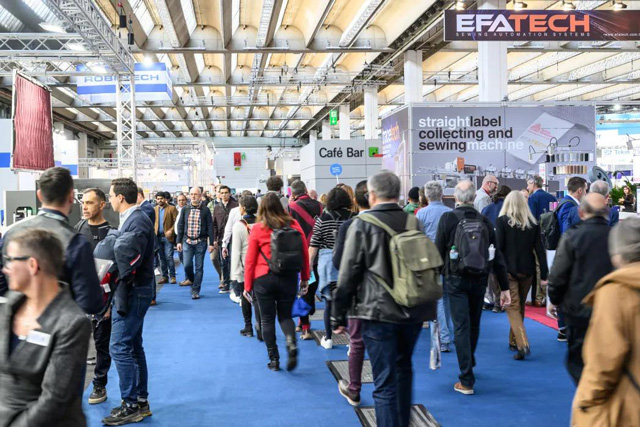 Techtextil & Texprocess Rounded Off
Techtextil & Texprocess Rounded Off
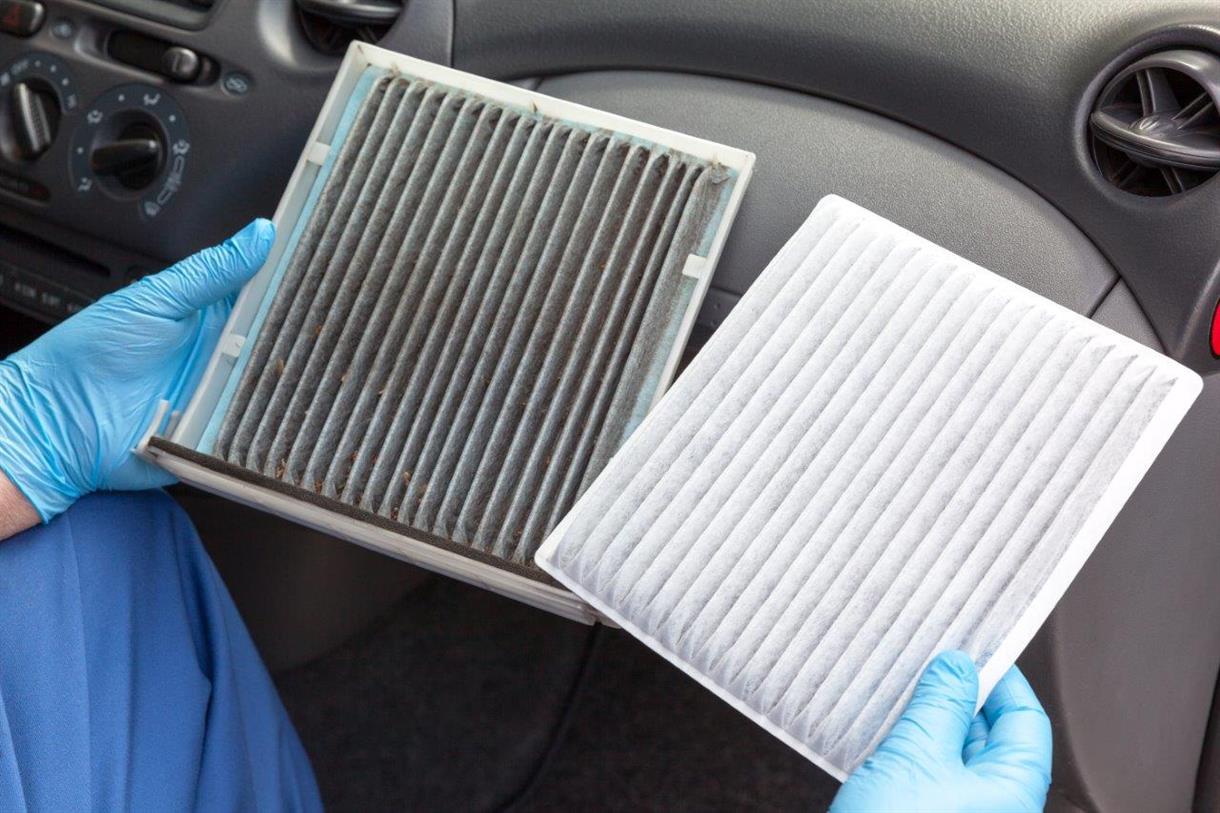 Nonwovens in daily life ----- filtration
Nonwovens in daily life ----- filtration
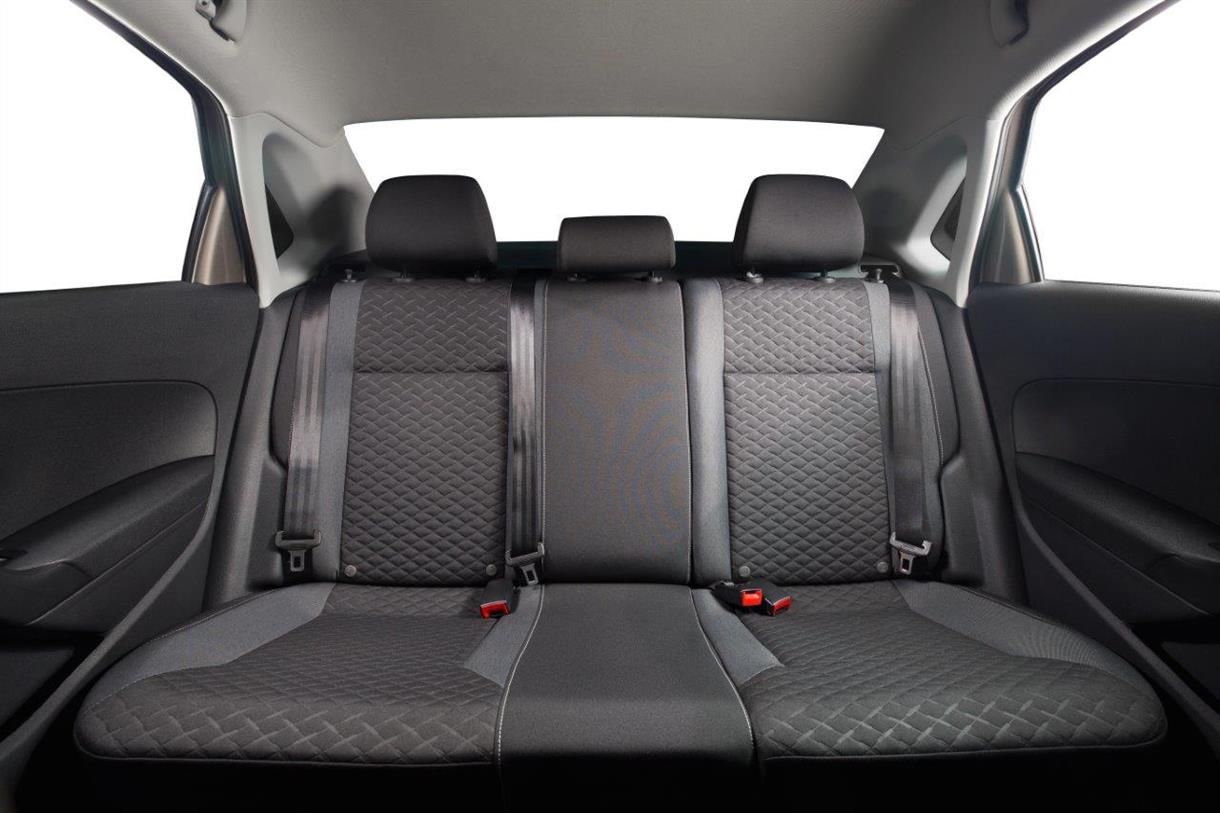 Nonwovens in daily life ----- automotive
Nonwovens in daily life ----- automotive
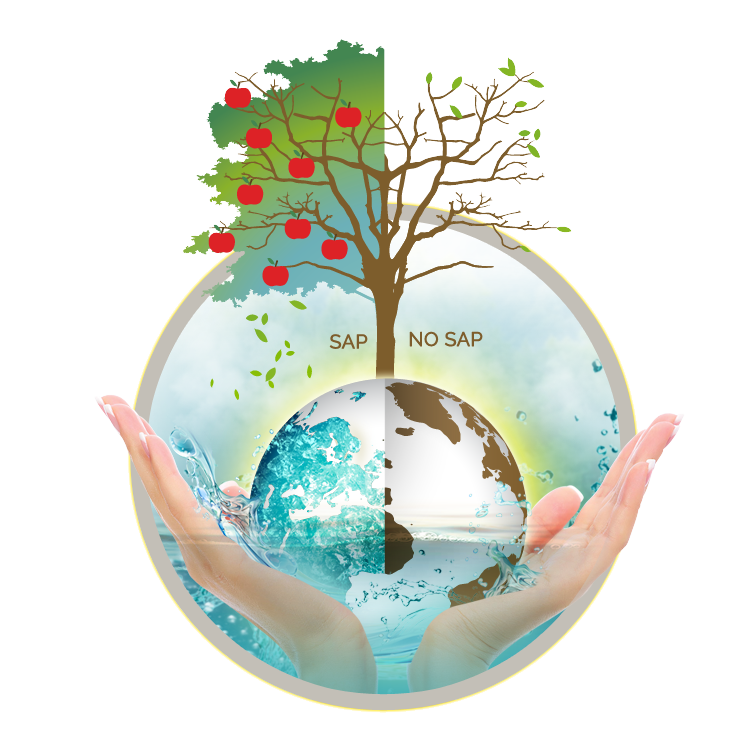 What is SAP – superabsorbent polymers
What is SAP – superabsorbent polymers